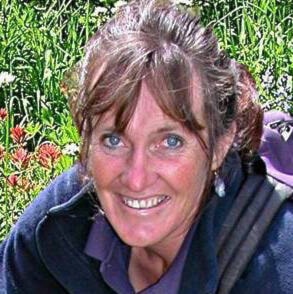Roseanne Van Ee
Okanagan’s Nature Nut
This is part two on our cheeky little red squirrels (Tamiasciurus hudsonicus).
Our little auburn coloured red squirrels are active all year and are especially fun to watch in spring as they scurry about in the warmer weather. When winter temperatures dropped below -10 Celsius the red squirrels snuggled into their dreys (branch nests) or tree cavity nests and hunkered down into deep torpor mini-hibernation sleeps until it warmed up. Their brown fat kept them warm when it was dangerously cold.
Unlike birds, red squirrel nests are used for year-round resting, escape, cover, warmth and breeding usually in mature, dense coniferous or mixed forests. Their forest territories provide food, nest sites, cover, moisture, shade and protection from wind. In winter the squirrels forage beneath the snow.
In late winter the usually solitary, diurnal adult red squirrels, over a year old, breed. And what a show! Adult males vigorously chase mature females up and down tree trunks and across the forest to finally mate. Gestation is approximately 35 days and litter sizes range from three to five young. Occasionally females will deliver a second litter in summer.
Squirrel “kittens” are born pink and bald, without teeth and their eyes closed. Like all baby mammals, they drink their mother’s milk. They grow up fast — at seven weeks, they’re rusty red and fluffy, and ready to occasionally leave the nest. The kittens stay in the maternal nests for three or four months before dispersing to new territories. Juvenile mortality is high, but surviving red squirrels typically live four to five years. Occasionally red squirrel populations boom.
Their habitat is about 200 square meters across the forest floor and up through the coniferous trees with a trash heap midden under a favoured dining branch. Red aquirrels are cone-shuckers. They vigorously nibble away at tree cones to eat the seeds and discard the scales into the midden then drop the cone on the cob. Often their middens are a meter deep and a few meters across.
Territory size is highly variable depending on food abundance. They are not shy and will brashly scold any intruders with a loud, chattering “tchrrrrr!” The squirrel is a chatterbox with a variety of calls to announce its home range or the presence of intruders. They will aggressively chase away any offending squirrels.
People may think they’re helping squirrels by feeding them, but they can easily find food on their own, even in cities. Feeding squirrels, or other wildlife, often increases their chance of injury or death and sometimes turns them into pests. Some people may also try to raise baby squirrels, but it’s illegal to keep them as pets in B.C. Like most native wildlife species in B.C., red squirrels are protected.
So long as we can conserve our red squirrels’ habitat, we’ll be able to enjoy watching their activity and keep them as wildlife neighbours.
Roseanne enthusiastically shares her knowledge of the outdoors to help readers experience and enjoy nature. Follow her on Facebook for more.
